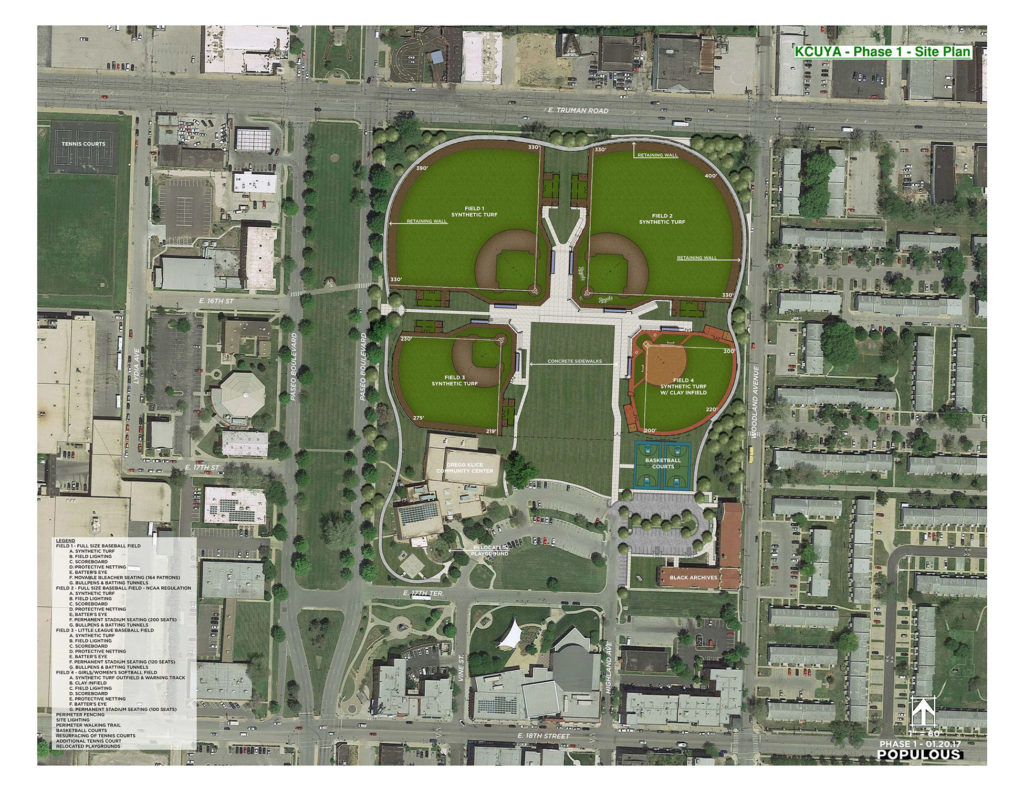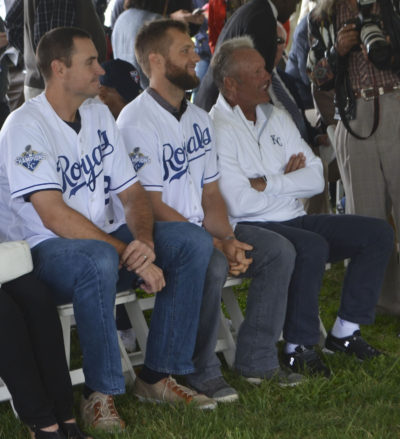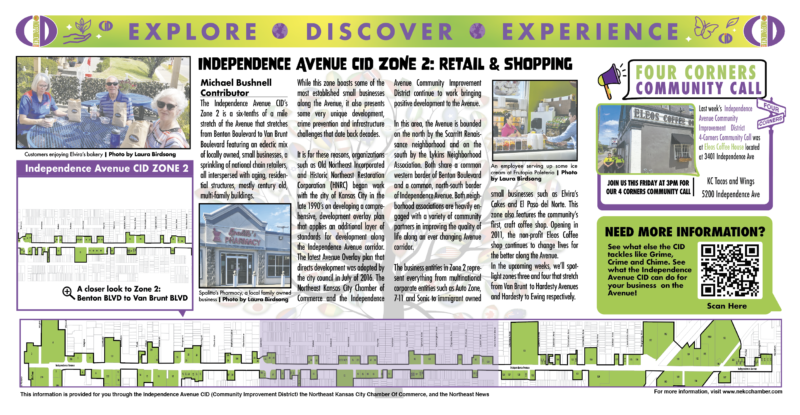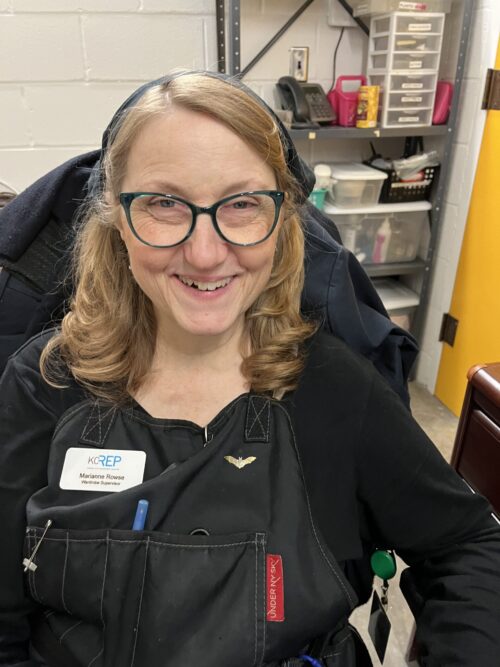
By Paul Thompson
Northeast News
January 25, 2017
KANSAS CITY, Missouri – A large crowd packed into a Gregg/Klice Community Center meeting room on Monday, January 23 for an update on the $14 million Kansas City Urban Youth Academy, a state-of-the-art youth baseball facility located right in Kansas City’s urban core, just outside of the 18th and Vine District. Along with an update, attendees received a pleasant surprise – that the price tag for the public/private initiative had actually ballooned to almost $19 million.
Kyle Vena of the Kansas City Royals told meeting attendees that additional donations have helped increase the scope of the project since it broke ground last April.
“The kids in your community are going to have a facility like no other,” Vena said.
The Kansas City Urban Youth Academy is being constructed in two phases. Phase I includes two NCAA regulation baseball fields, a youth baseball field, and a softball field, each with synthetic turf. The youth baseball field will include a 20-foot silver wall in left field, which has been dubbed the ‘Silver Monster’ by developers in reference to Fenway Park’s infamous ‘Green Monster’ in Boston. Several public areas will also be included within Phase I, including the construction of basketball courts, off-site tennis courts, an elevated walking trail, a playground, and new parking.
Each of the fields will have seating: Field 1 will include movable bleachers that can fit 164 patrons; Field 2 will have 200 permanent seats; Field 3 will have 120 permanent seats; and Field 4 will have 100 permanent seats. Every field will also include scoreboards and protective netting.
Initial funding for Phase I included $2 million from the State of Missouri, $2.052 million from the City of Kansas City, $2 million from the MLB Urban Youth Foundation, and $1 million from the MLB Player’s Association. Additional funds were also gathered through private donations. Vena noted that naming rights for each of the four playing fields brought in $1 million apiece.
The second phase of the project includes construction of an indoor training facility complete with batting cages, a replica of a full-sized MLB infield, a pitching mound, office space, and storage. Phase II also includes the lighting for the four fields and the parking facility included in Phase I. David Bower, a Principal and Senior Project Manager at Populous, the project’s design firm, elaborated on the indoor infield that’s modeled after the one at Kauffman Stadium.
“It is an exact replica of the infield at the K,” said Bower. “Not only can the major leaguers come over during the winter time – but kids can run through their drills on exactly the sized field that there is at the K.”
From the beginning, the Kansas City Royals and Major League Baseball have been the driving force of the ambitious project, which aims to conduct free clinics, training, and tournaments for Kansas City’s youth, especially those who live near the academy. 3rd District Councilman Jermaine Reed said during the meeting that discussions about how to ensure that urban core youths are the primary benefactors of the new facility are ongoing.
Vena conveyed his excitement about the Urban Youth Academy during the Jan. 23 meeting, while thanking Kansas City leaders for supporting the project.
“We want to make sure that this facility is about so much more than teaching kids how to throw from right field to second base on a line,” said Vena. “We’re very lucky and fortunate to live in a city where people embrace a project like this.”
Both Phase I and Phase II of the Kansas City Urban Youth Academy are expected to be completed by the fall of 2017. At the Jan. 23 meeting, Carlton Johnson of JE Dunn revealed that Phase II had just received a Notice to Proceed.
The two basketball courts and the walking trail are expected to be ready to go by August. Vena noted that there are currently no plans to place advertising along the outfield fences of the four fields, as developers want to maintain open sight lines throughout the 3/4-mile trail.
“You actually walk along the trail and you’re elevated over the field at a lot of different points,” said Vena. “It’s actually a really cool perspective, and putting advertising on the outfield fence kind of eliminates that.”

Partners involved with the Kansas City Urban Youth Academy initially broke ground at the site on April 20, 2016, in a ceremony that included Kansas City Royals general manager Dayton Moore, former Royals great George Brett, and current Royals players Alex Gordon and Chris Young.
At the time, Kansas City, Missouri Mayor Sly James noted the historical importance of bringing the Urban Youth Academy to the 18th and Vine District.
“As Mayor, I can’t think of a better project than this one. This is a no-lose project,” said James. “It is not lost on me that 100 yards that way is the Negro Leagues Museum, where the Negro Leagues was started. Now we’re bringing baseball right back to the doorstep of where it all started.”
Project representatives concluded their Jan. 23 presentation by taking questions from meeting attendees. During that portion, KCMO Parks and Recreation Director Mark McHenry discussed the potential economic impact of the Urban Youth Academy on the 18th and Vine District and surrounding area.
“Initially you’re going to have an economic impact through construction,” said McHenry. “I think a lot of this is the multiplier effect. As it becomes more of a destination location, that’s going to serve as an economic engine.”
Bower added that Major League Baseball likens Kansas City’s new academy to a similar one in Houston that draws 25,000 participants per year. He noted his expectation that the Urban Youth Academy will ultimately draw a lot of retail opportunities to the area. 3rd District Councilman Quinton Lucas, who helped host the meeting along with colleague Jermaine Reed, expanded on the potential economic impact for the community.
“Parents and other people in the community have a real opportunity to have job opportunities and access to training, coaching, etc., right here with this project,” said Lucas. “Our plan is – as the Mayor has talked about and Councilman Reed has talked about – is that this isn’t just something that happens in the baseball park over here, or for a few projects over here, it’s something that’s a boon for the whole neighborhood.”
Before wrapping up, Vena made sure to highlight what he feels is the most important aspect of the Kansas City Urban Youth Academy: it’s completely free for attendees.
“It’s free. There’s no cost; that’s part of the MLB’s initiative,” said Vena. “We want to make sure that learning baseball is affordable.”




















